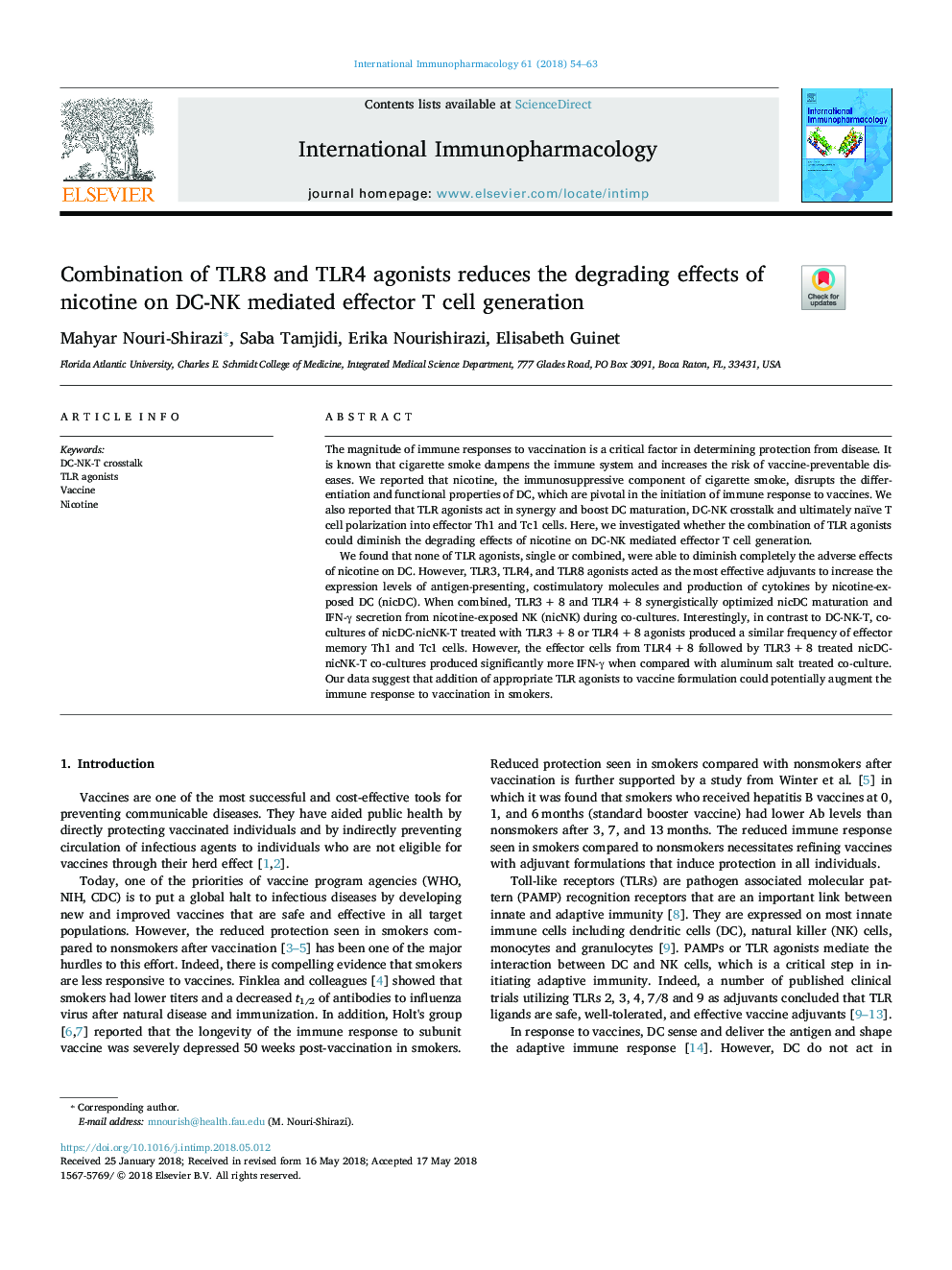| Article ID | Journal | Published Year | Pages | File Type |
|---|---|---|---|---|
| 8531042 | International Immunopharmacology | 2018 | 10 Pages |
Abstract
We found that none of TLR agonists, single or combined, were able to diminish completely the adverse effects of nicotine on DC. However, TLR3, TLR4, and TLR8 agonists acted as the most effective adjuvants to increase the expression levels of antigen-presenting, costimulatory molecules and production of cytokines by nicotine-exposed DC (nicDC). When combined, TLR3â¯+â¯8 and TLR4â¯+â¯8 synergistically optimized nicDC maturation and IFN-γ secretion from nicotine-exposed NK (nicNK) during co-cultures. Interestingly, in contrast to DC-NK-T, co-cultures of nicDC-nicNK-T treated with TLR3â¯+â¯8 or TLR4â¯+â¯8 agonists produced a similar frequency of effector memory Th1 and Tc1 cells. However, the effector cells from TLR4â¯+â¯8 followed by TLR3â¯+â¯8 treated nicDC-nicNK-T co-cultures produced significantly more IFN-γ when compared with aluminum salt treated co-culture. Our data suggest that addition of appropriate TLR agonists to vaccine formulation could potentially augment the immune response to vaccination in smokers.
Related Topics
Life Sciences
Immunology and Microbiology
Immunology
Authors
Mahyar Nouri-Shirazi, Saba Tamjidi, Erika Nourishirazi, Elisabeth Guinet,
